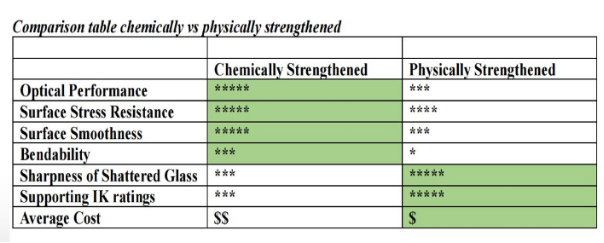As we all known, we use cover lenses for touch panel and display.
So what is cover lens and how are they being produced?
Cover lenses are usually fabricated from glass, PMMA, PC. And for glass cover lens, there are two main types of glass used,
each have their own properties and are used for different applications. Sodalime is the most wellknown type of glass and makes
up around 90% of the glass used in the world. As would be expected from its popularity, it offers a list of specifications that
includes good mechanical strength, optical parameters, and temperature resistance.
The main alternative to sodalime glass is aluminosilicate glass, which offers better performance than its competitor, but is much
harder to produce and therefore can be up to 6 times more expensive. Because of its cost, it is usually only found in niche
applications where additional strength and protection is paramount, such as smart phones and AR/AV devices. The main features
that make aluminosilicate glass attractive for cover lens use are its resistance to high temperature and chemical exposure, and
its ability to withstand scratching.
There are two ways that glass is normally strengthened, and each has its own pros and cons. Chemical strengthening involves
soaking the glass in a KNO3 solution at a temperature of 420℃. The sodium ions are replaced by larger Potassium ions on the
surface of the glass. The larger surface ions are squeezed together to form a stress layer. After toughening, aluminosilicate glass
has a typical strength of 600 megapascals (mpa) compared to sodalime glass, which is generally in the region of 450 mpa.
Aluminosilicate glass also keeps its shape and doesn’t bend after chemical strengthening,unlike sodalime glass where its curve
allows it some room to flex if the glass is pressurised. Chemically strengthened glass is the method seen in most applications
including medical and automotive devices.

The second way of strengthening the glass is physical tempering, where the glass is slowly heated to around a peak temperature
of 700℃ and then cooled rapidly by high pressure air. The outer surface of the glass cools more quickly than the center, which
has the effect of compressing the edges as the center pulls away from it, increasing the tension of the glass and therefore the
toughness. Applications with thicker cover glass benefit from physical tempering such as outdoor entry systems, security
communications and public signage systems where vandalism could occur.
Team Source Display has rich knowledge and experience in developing product for the most complicated and special missions,
in any environment, anywhere in the world.
For more details, please visit: www.tslcd.com
#touchscreen #display #touchdisplay #coverlens #glass